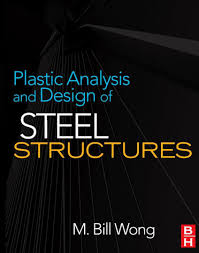
دنیای مهندسی سازه های دریایی
Offshore Structures
دنیای مهندسی سازه های دریایی
Offshore Structuresدرباره من
پیوندها
- king-of-offshore این تلگرام جهت اطلاع رسانی از مطالب وبلاگ برای گروه می باشد/This the Telegram for information of the blog for groups/Este telegrama la información del blog para grupos
ابر برجسب
سازه های دریایی offshore structures wind turbine Persian Gulf soil mechanics مهندس بیژن محمدی سازه دریایی pipelines Platform jacket retaining walls konstrukcje offshore offshore constructies offshore szerkezetek Structural offshore konstruktioner Bijan Mohammadi بیژن محمدیجدیدترین یادداشتها
همه- نشریه شماره 71 محافظت ابنیه فنی آهنی و فولادی در مقابل خورندگی سال 1356
- کلیم در پروژه های عمرانی ،دریایی و ساحلی (آماده جهت همکاری با شرکتها پیمانکاری دریایی (لایروبی)
- Climatic and environmental information in terms of wind speed, snow load, etc
- پیشرفت در تکنولوژی واشر /Advancements in Fastening Technology
- طراحی سازه های خاص و صنعتی/Design of special and industrial structures
- طراح سازه سوله و سازه خاص و جکتها/Designer of shed structure and special structure and jacks
- تست هوای پرواز اولین هواپیمای آب نشین در ایران در کنار اولین مارینا خصوصی
- ساخت مارینا/ Marina construction
- نحوه تحویل گرفتن شمع(حفاری دستی) از پیمانکار به صورت شاقولی/How to receive the pile from the contractor vertically
- کشتی تحت پرچم یک کشور دیگر،Ship under the flag of another country
بایگانی
- فروردین 1403 1
- آذر 1402 2
- مهر 1402 1
- شهریور 1402 1
- مرداد 1402 1
- تیر 1402 1
- اردیبهشت 1402 1
- بهمن 1401 1
- مهر 1401 1
- مرداد 1401 1
- اردیبهشت 1401 1
- دی 1400 1
- آذر 1400 1
- شهریور 1400 1
- بهمن 1399 1
- بهمن 1398 2
- اردیبهشت 1398 1
- فروردین 1398 1
- اسفند 1397 2
- بهمن 1397 3
- دی 1397 3
- آذر 1397 3
- آبان 1397 3
- شهریور 1397 10
- مرداد 1397 9
- تیر 1397 8
- خرداد 1397 3
- دی 1396 1
- آذر 1396 1
- مهر 1396 6
- شهریور 1396 2
- فروردین 1396 6
- اسفند 1395 6
- بهمن 1395 3
- دی 1395 3
- آذر 1395 12
- آبان 1395 4
- مهر 1395 2
- شهریور 1395 3
- مرداد 1395 1
- تیر 1395 8
- خرداد 1395 8
- اردیبهشت 1395 8
- فروردین 1395 13
- اسفند 1394 5
- بهمن 1394 4
- دی 1394 10
- آذر 1394 6
- آبان 1394 3
- مهر 1394 8
- شهریور 1394 10
- مرداد 1394 10
- تیر 1394 10
- خرداد 1394 10
- اردیبهشت 1394 10
- فروردین 1394 12
- اسفند 1393 18
- بهمن 1393 15
- دی 1393 15
- آذر 1393 7
- آبان 1393 9
- مهر 1393 18
تقویم
فروردین 1403| ش | ی | د | س | چ | پ | ج |
| 1 | 2 | 3 | ||||
| 4 | 5 | 6 | 7 | 8 | 9 | 10 |
| 11 | 12 | 13 | 14 | 15 | 16 | 17 |
| 18 | 19 | 20 | 21 | 22 | 23 | 24 |
| 25 | 26 | 27 | 28 | 29 | 30 | 31 |
جستجو
Plastic Analysis and Design of steel structures, M. Bill Wong,Butterworth-Heinemann,2009
Plastic Analysis and Design of steel structures, M. Bill Wong,Butterworth-Heinemann,2009
This file is password
Password: CE-MS MS.c Bijan Mohammadi
All text & change the color to use to download it
دانلود/Download کلمه عبور/Password

Contents
Structural Analysis—Stiffness Method
Plastic Behavior of Structures
Plastic Flow Rule and Elastoplastic Analysis
Incremental Elastoplastic Analysis—Hinge by Hinge Method
Manual Methods of Plastic Analysis
Limit Analysis by Linear Programming
Factors Affecting Plastic Collapse
Design Consideration
Plastic Analysis and Design of Steel Structures, by M. Bill Wong, Butterworth Heinemann, 2008
تجزیه و تحلیل پلاستیک و طراحی سازه های فولادی این کتاب دارای 257 صحفه می باشد نظریه سفت و محکم پلاستیک از طریق فرمول کار مجازی که در آن انحراف الاستیک نادیده گرفته شده مورد ارزیابی قرار گرفته شده است.سر فصل ها آن در پایین مشخص شده است.
Plastic Analysis and Design of Steel Structures, by M. Bill Wong, Butterworth Heinemann ( Elsevier), 2008
This file is password
Password:CE-MS MS.c Bijan Mohammadi
All text and change the color to use to download it
کلمه عبور/Password دانلود /Download

The plastic method has been used extensively by engineers for the design of steel structures, including simple beams, continuous beams, and simple portal frames. Traditionally, the analysis is based on the Rigid-plastic theory whereby the plastic collapse load is evaluated through virtual work formulation in which elastic deflection is ignored. For more complex frames, specialist computer packages for elastoplastic analysis are usually employed. Current publications on plastic design method provide means of analysis based on either virtual work formulation or sophisticated plastic theory contained in specialist computer packages. This book aims to bridge this gap
The advent of computers has enabled practicing engineers to perform linear and nonlinear nonlinear on a daily basis using computer programs widely available commercially. The results from computer analysis are transferred routinely to tools with automated calculation formats such as spreadsheets for design. The use of this routine procedure is commonplace for design based on elastic, geometrically nonlinear analysis. However, commercially available computer programs for plastic analysis are still a rarity among the engineering community
- Structural Analysis—Stiffness Method
Plastic Behavior of Structures
Plastic Flow Rule and Elastoplastic Analysis
Incremental Elastoplastic Analysis—Hinge by Hinge method
Manual Methods of Plastic Analysis
Limit Analysis by Linear Programming
Factors Affecting Plastic Collapse
Design Consideration